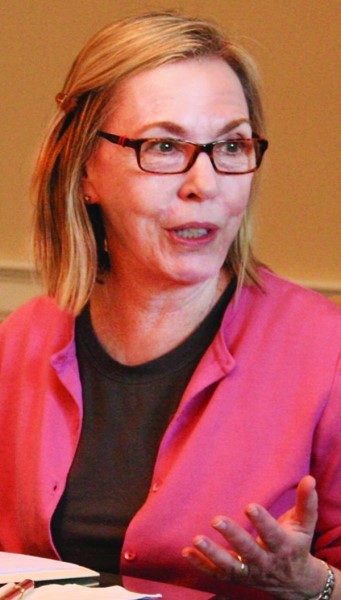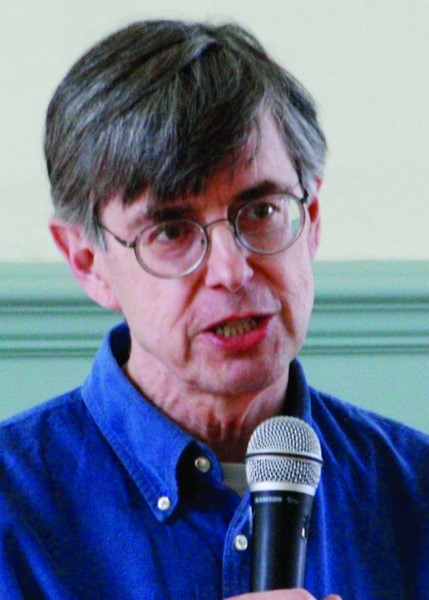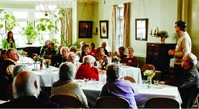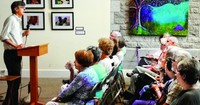Providence group gives new meaning to ‘it takes a village’
Do you worry about what might happen to you as you get older? Do you dream of a retirement home in Florida or, perhaps, Arizona? Do you think that downsizing now will make life easier as you age? Are you looking at senior living complexes where assistance is available? Do you fear nursing facilities?
Many of these questions are troubling. And many people long to stay in their lifelong homes, surrounded by their creature comforts and memories for the rest of their lives.
Now, thanks to a network of “villages,” living out life at home is easier, despite a global society where children move far from parents, extended families no longer live in the same neighborhood and people live longer than ever before.
On the East Side of Providence, extending into Pawtucket, the Providence Village recently celebrated its first birthday. A diverse grassroots organization of more than 100 members, it is built on a model of volunteers who help members “age in place.” And many of those volunteers are members themselves.
“We are a community of mutual support,” says Cy O’Neil, president of the board of directors and one of the founders. “There’s lots of opportunities to join us. We have a lot of great ideas.”
Members pay a fee to join the village and access its services. The village grows according to its volunteer base and ability to help members who need assistance.
Currently there is a part-time staff member to help with administration, and the group has an office in Hamilton House on the East Side. But everything else the group does is volunteer-driven.
“Offering people the opportunity to volunteer and support their neighbors, that’s the joy of it,” said Pat Gifford, a retired geriatrician and volunteer. “That’s what sets us apart from social service agencies and other social organizations.”
Gifford has learned a lot about the village concept and visited a number of them.
“If you have memories of neighborhoods and neighbors, they made you feel safer. That’s what a village does,” she said.
If you talk to members or volunteers, you’ll soon see why everyone benefits from their connections to a village.
Nan Levine is a longtime East Side resident. She heard about the Providence Village when she was in a “transition period,” she said.
“The fact that this was a community opportunity was appealing,” she said. “I felt there was such a need for this kind of thing.”
“To take advantage of the community and then give back” is important to her, said Levine, who volunteers as head of the team that makes friendly phone calls as well as relying on the driving service to get around, especially to doctors’ appointments.
“The drivers are the nicest, kindest group of people. It has saved my life,” she said.
The driving service is the most popular service offered by the Providence Village, according to O’Neil.
Tito Cohen is one of many volunteer drivers. A language teacher at Hope High School and Classical High School for many years before retiring, Cohen loves to talk and has a ready smile. He got involved with the Village with his wife, Nora. He’s been driving since the beginning.
“Driving is lovely,” he said. He said he loves getting to know people, like Levine.
Members who need a ride call the coordinator, who enters the information about when and where the ride is needed into a computer program that goes out to the driving volunteers – you can even request a particular driver.
The Providence Village is still in its early stages. Currently, in addition to rides, members can get help with light home maintenance and housekeeping; participate in a social network that includes activities as well as a check-in phone service; and get assistance with small computer problems or take computer classes in partnership with Hamilton House.
Gifford also leads a team of volunteers who aim to help people navigate the health care system, from helping with home safety to accompanying members on doctors’ visits to hear what’s said.
The ideas for all of these services come from other villages as well as members.
“We’re learning,” O’Neil says.
For example, they’ve learned that many members participate in the social activities – and that the new technology volunteers get more calls about printer connections than anything else.
Suzanne Goldfine, of Warwick, heads the technology group, which has seven volunteers. She became involved in the Providence Village because she was looking into starting a village near her home. For now, she’s helping in Providence.
“It’s nice to see a person’s comfort level [with technology] increase,” she said.
The “granddaddy of the village movement” is the Beacon Hill Village, in Boston, started more than 15 years ago. O’Neil said the Providence group looked to Beacon Hill’s model when they started.
There’s also a national village-to-village network (vtvnetwork.org), which offers assistance to local groups that want to start a village, runs a conference, and studies the movement. According to the network, there are currently more than 200 villages in the United States and 150 more in development.
“We are getting calls from other parts of the state, from people interested in getting a village going,” O’Neil said.
For more information on the Providence Village, email Membership@ProvidenceVillageRI.org, call 401-441-5240, or go to providencevillageri.org.
FRAN OSTENDORF is the editor of The Jewish Voice.















